Hi all, in this DIY I am going to show you how water walks. Did you hear me right? Yes, water can walk and here it happens. Let us quickly see the instructions to make water walk and a bit of science behind it as well. Spend your holidays at home with kids using these simple experiments and feel glad that you teach them science.
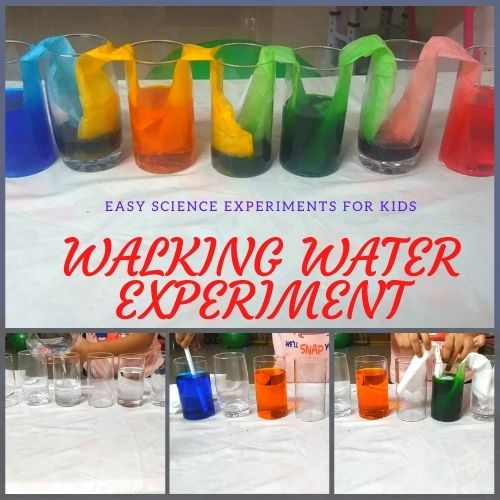
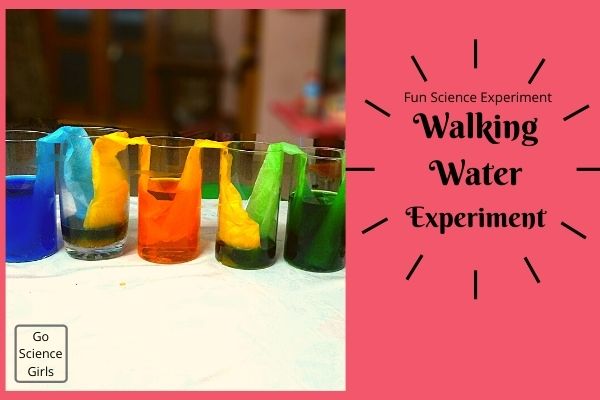
How to make water walk
Things required

- Glasses – Minimum two – preferably transparent cups
- Food color – colors of your choice
- Paper towel – 1 to 2 inch wide
- Water
Steps to follow
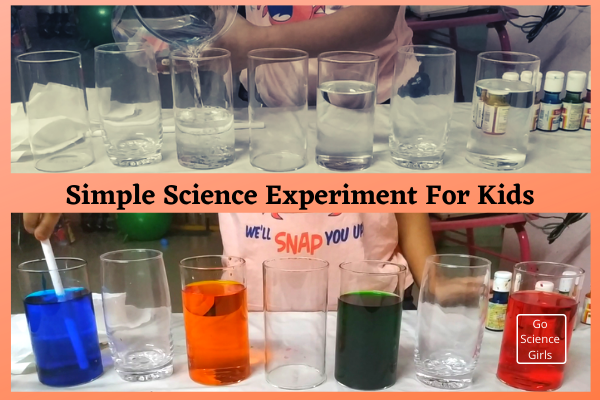
- Take the glass tumbler and place them on the table. At least two tumblers are required to see water walk. You must place tumblers close to each other with minimum distance apart.
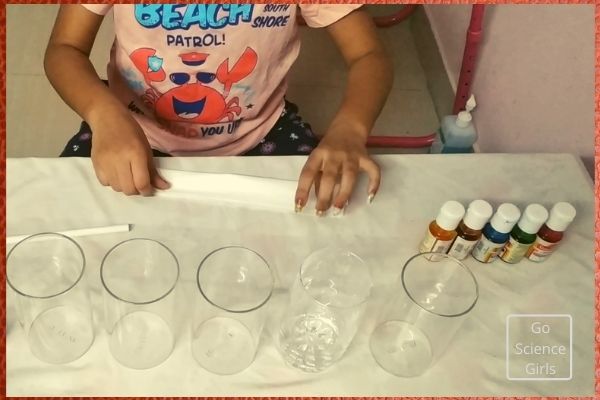
- Fill one glass with water. In case you are taking more glasses, then fill every alternate glass with water.
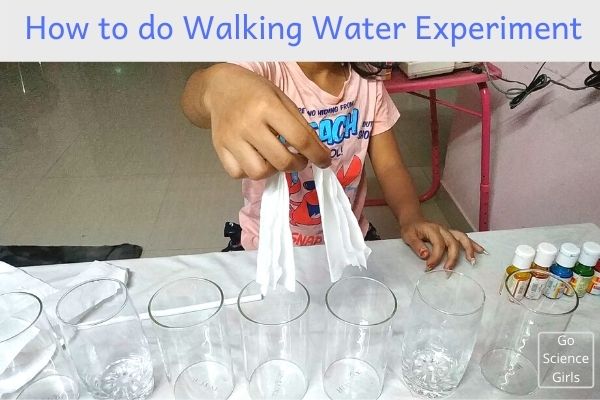
- Fold the paper towel and fold it horizontally twice to make it look like a strip. Then fold in half vertically and adjust the height by cutting at the ends based on the height of your glass.
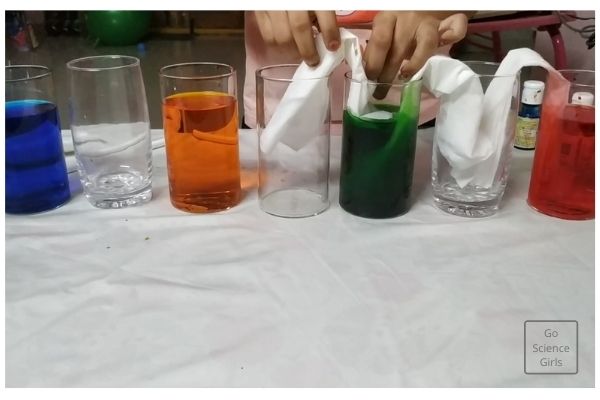
- Add a few drops of colors in the tumblers with water. You can add different colors and observe the color absorption as well.
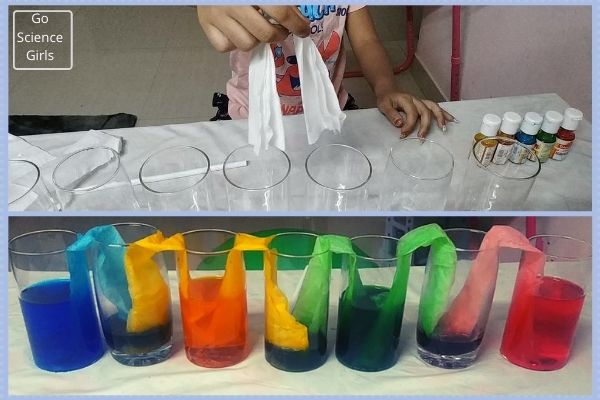
- Place the paper towel in such a way that one half is in the tumbler with water and food color and the other end into the glass which is empty and adjacent to the tumbler with water.
- Leave this undisturbed for minimum one hour.

Observation
You can witness the paper towel becoming wet first and slowly it will become excess and the water will get transferred to the empty tumbler. Water will continue to walk until both the tumblers have an equal level of water. With the help of the paper towel, water from one glass walks to another glass. Adding food color will allow you to see the movement easily.
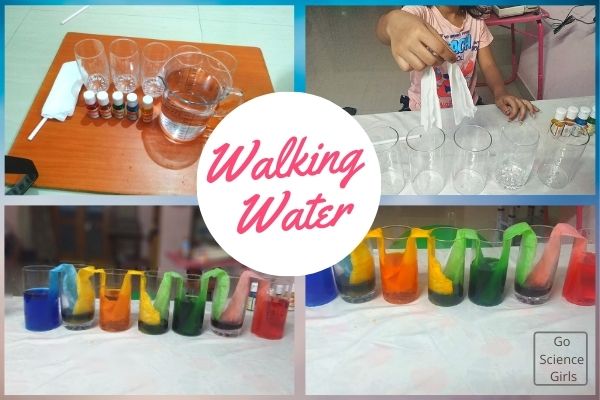
Science behind
Water moves due to capillary action. Paper towels and water contain adhesive force. Water has cohesive force within. The adhesive force remains stronger than the cohesive force. This will make the water travel through the paper from one glass to another.
Paper towel is made up of small fibers and they have a gap between them. Water will get pulled into the gap by capillary action. This is the same that happens by which tree suck water from the ground. Surface tension fuels this action, the water molecules are attracted due to cohesion. Thus absorption happens which is also fueled by the adhesive force between water and paper towels.
A paper towel is made of cellulose and has some positive charge and negative charge on either end. Water molecules are also having charge and this will lead to opposite charge attraction concept making water and paper towel come closer. We can also relate this to siphoning action.
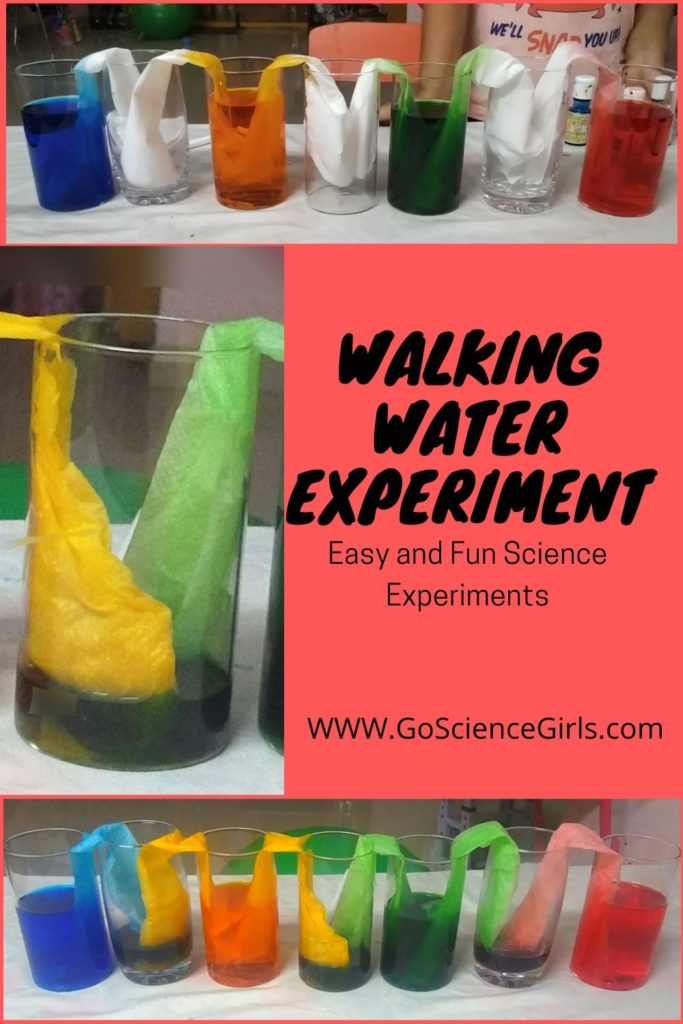
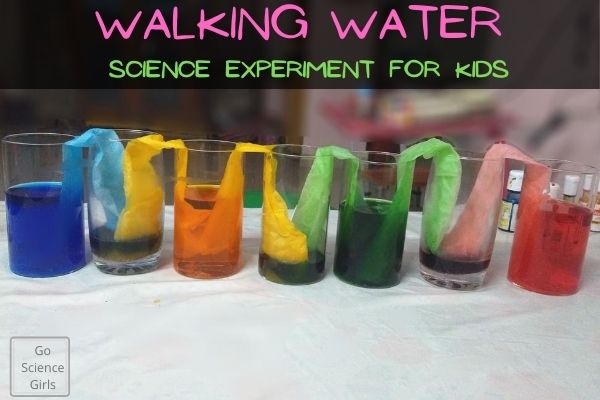
Some More Science Facts
It takes a minimum of 30 minutes for the water to walk from one glass to another. Within 2 hours you can see both the glasses with equal amount of water. Water has walked from one glass to another.
Capillary action makes water to be absorbed from the glass to the paper towel and that is explained in this experiment. You need water, glass, paper towel and food color to see the water walk.
Paper towels are made up of plant fibers. The mixing of the resin will increase their absorbing power. This prevents paper towels from tearing, unlike a normal paper does. Stronger the resin more does the paper towel absorb. The air-pockets in the paper towel will attract water.
Fill water in one cup and keep an empty cup adjacent to it. Fold a paper towel and place it’s one half in one cup and the other into the other cup. The paper towel will absorb water from the glass and fill t
